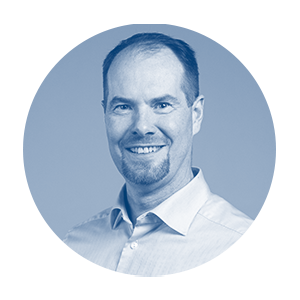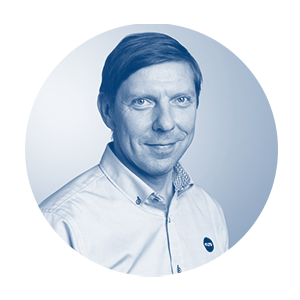What do sustainable hygiene solutions in the food industry consist of? Our experts explain how to identify the essentials in an abbreviation-filled terminology jungle and find partners that support your company’s goals. The original interview was published in the Finnish Food and Health magazine issue 1/24.
Everything that promotes well-being and paves the way for a sustainable future is important. However, one perspective should not obscure the big picture. A packaging made from recycled material does not justify its contents, and reducing emissions does not eliminate the challenges of biodiversity.
Companies should have the courage to break down the discussion into parts. Then, sustainability can be genuinely assessed from different perspectives. Raw materials, manufacturing, packaging, logistics, waste, recycling, biodegradability, or perhaps emissions? The answer is that all of these should be considered, and more.
Your own goals as a measure
“First, it’s essential to understand where your own organisation’s operations can make an impact. Once your goals are clear, they can be measured. Then, you can select solutions, services, or partners that contribute to achieving those goals,” says Jukka Rantala, Sales Manager for Kiilto’s professional hygiene business.
Rantala knows that the process isn’t as easy as it sounds.
“Companies need to be able to produce more information about the environmental impacts of their solutions. For example, carbon footprint calculations or assessments of biodiversity impacts are often still incomplete.”

“Sustainability is a learning process. In hygiene, you can start by familiarising yourself with the correct use of the product. Raw materials or dosing can have a significant impact.”
Jukka Rantala
Sales Manager, Professional Hygiene
Sustainability is built step by step. Different certifications, such as the Nordic Swan Ecolabel, can also facilitate assessment. According to Rantala, the most important thing is to get started.
“Sustainability is a learning process. In hygiene, you can start by familiarising yourself with the correct use of the product. Raw materials or dosing can have a significant impact.”
Examination at different levels
It’s good to consider solutions more broadly than just in the usage situation. Product safety should be evaluated, for example, from the perspective of the product’s user, usage context, environment, and manufacturing process. Water consumption can be examined from the perspectives of raw materials, manufacturing process, product use, and one’s own process.
According to Rantala, a good way to break down sustainability-related questions into more manageable parts is life cycle thinking.
“Life cycle assessment considers the impacts at different stages and may reveal where actions should be directed. In addition to life cycle assessment, it’s good to focus on effectiveness,” he summarizes.
Circular economy emphasizes courage and collaboration
In January 2023, Kiilto was selected to participate in the Circular Design – Development Path Towards a Circular Economy training program. The training delved into design principles aligned with circular economy principles and developed feasible concepts aimed at reducing the amount of waste and pollution generated. A total of 50 Finnish companies from various industries participated in the training.
“Integrating circular economy thinking into the design process is already a reality at Kiilto. Through the training program, we gained access to additional operational models that we can systematically incorporate into project management and sustainable development projects,” says Jussi-Matti Kauko, Product Development Manager for Kiilto’s professional hygiene business.
“Solving challenges related to circular economy requires courage and continuous activities. We need to facilitate the sharing of information and collaborative experiments to connect value chains in new ways. Pioneers can provide inspiration to others, but for the circular economy markets to become mainstream and more approachable as a whole, we need to involve a broader group of participants,” says Tomi Takala, Business Director for Kiilto’s Industrial Adhesives and Fire Proofing business.
Environmental innovations as part of security of supply
Global crises such as the COVID-19 pandemic and the outbreak of war in Ukraine challenged our perception of the rapid movement of goods and raw materials.
As the availability of raw materials and components became more difficult and energy prices began to rise, investments and development projects also came up for reassessment. At Kiilto, there was a quick consensus that environmental issues had not disappeared anywhere.
For example, solutions aimed at reducing material or energy usage were seen as a more integral part of companies’ and societies’ ability to cope with disruptions, as part of security of supply.
“Environmental innovations can also reduce dependence on certain raw materials or energy,” summarizes Rantala.
“We have previously tested alternative raw materials for critical components to ensure availability even in crisis situations and thereby ensure delivery reliability for customers. Security of supply is a critical part of maintaining societal functionality. It’s a good example of the interconnection between environmental and social responsibility,” he clarifies.
The ability to react is a prerequisite for sustainability
When the world changes, organisations must keep pace with the change. We are constantly learning more, and the lessons learned must be swiftly translated into action.
“Our Promise to the Environment at Kiilto is updated approximately every two years. We replace achieved goals with new ones and ensure that the Promise takes into account changes in our operating environment. Most recently, we added goals related to biodiversity and process water usage to our Promise,” Takala explains.
Sustainability is also about ensuring operational continuity. This was also acknowledged at Kiilto when challenges in raw material availability, caused by the changing global situation, were reflected in prices across many industries. The phenomenon quickly became evident in the food industry as well. When the price of lye multiplied, new hygiene solutions were urgently needed.
“The starting point of our product development was to find chemically equally effective but more affordable raw materials and thus quickly provide customers with means to manage suddenly skyrocketing costs,” describes Rantala.
Soon, the new Kiilto Pro Pure product range was introduced to the market. While it addressed price challenges, the launch was also significant environmentally.
“We hit two birds with one stone because we found a way to also serve our sustainability goals. Our new product range significantly reduces the phosphorus load of production facilities,” Rantala explains.
Toward regenerative business
What does the future of sustainability look like from a hygiene perspective? Rantala and Takala have some insights on that.
“The mindset needs to change. Fortunately, we are already partly on that path in Finland. Instead of organizations focusing on selling as much as possible, players in different sectors need to invest in minimizing usage while still conducting profitable business. This means process optimization, new sustainable raw materials, and even more open collaboration,” reflects Takala.

“Neutrality isn’t enough if we intend to build a future for the next generations.”
Tomi Takala
Business Director, Industrial Adhesives and Fire Proofing
The collaboration within Kiilto’s own business operations has also evolved over the years. At first glance, one might wonder what industrial adhesives have in common with professional hygiene.
“A lot, actually. We may even work with the same customer, but at different stages of the process. It’s important to understand, for example, the operations of the food industry comprehensively so that sustainability aspects can be widely taken into account. Kiilto, for instance, supplies adhesives for packaging in the food industry. On the other hand, we optimize cleaning processes. There are many perspectives in between where we can help with more sustainable choices,” explains Rantala.
Takala brings up a relatively new perspective, regenerative business. This term refers to business with net positive impacts on the environment and society.
“That’s the direction we need to go. Neutrality isn’t enough if we intend to build a future for the next generations,” he emphasizes.
Kiilto’s 5 tips for sustainability work:
- Evaluate sustainability from multiple perspectives. However, don’t hesitate to start from somewhere.
- Identify areas where you can make an impact.
- Consider whether you’re seeking a product, a service, or perhaps both in the form of a more holistic solution. Choices can have effects on emissions or process optimization, for example.
- Choose a partner who can also offer training, as sustainable practices significantly affect environmental footprints.
- Invest in continuous improvement. Sustainability is a process that needs to evolve over time.
